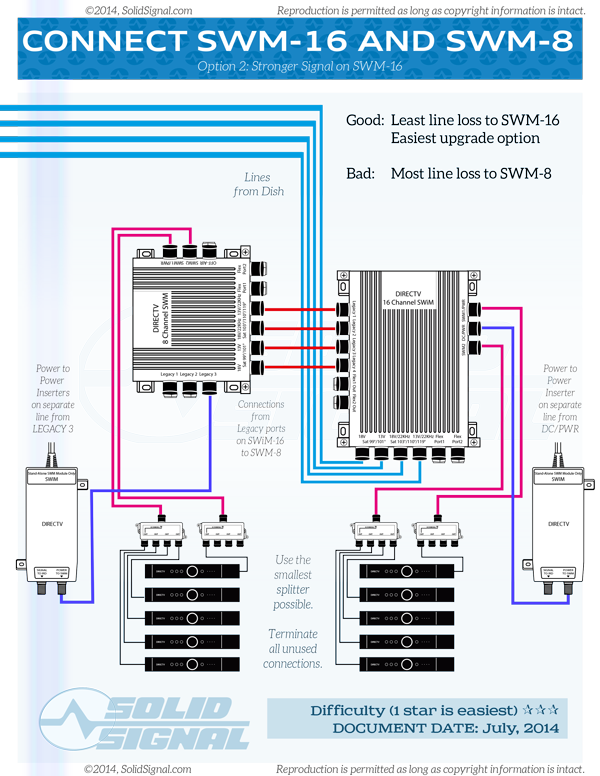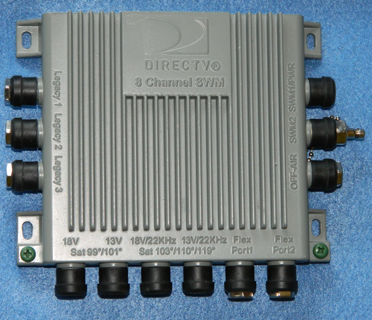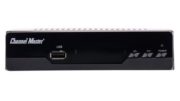Cascading. You could be forgiven if you think it has something to do with dishwasher detergent. However, at one time it was very important technique used in satellite distribution to cut down on the amount of cable and number of splitters used.
Cascading is when you use one thing to feed another thing. For example, you connect one multiswitch to another one. This saves extra cable and the use of a splitter. It’s ok sometimes, sometimes it’s risky, and sometimes it shouldn’t be done.
What cascading looks like
With an older DIRECTV multiswitch, the cables from the Legacy 1 through 4 ports are fed into the input of the other multiswitch, like this diagram from the 2014 version of our Ultimate Guide to Upgrading Your DIRECTV System:

When it’s OK to cascade
If you still have an old SWM-32 multiswitch, or the commercial-only SWM-13 multiswitch, you can cascade from one switch to another of the same type. If you are a DISH user, up to three DPP44 multiswitches can be cascaded from one DPP44 multiswitch.
When cascading is risky
You can connect one SWM8 multiswitch to another, or a SWM8 to a SWM16, or a second SWM16 to the first. This isn’t DIRECTV-approved but it does work in most cases. The output level of the legacy ports is lower than the input level from the dish, and the line has more noise in it. So it should work most of the time but sometimes could result in signal issues.
When you cannot or should not cascade
First of all, it’s impossible to cascade the DIRECTV SWM-30 multiswitch or the DISH DPH42 multiswitch. It’s less of an issue, since up to 4 SWM-30s can be put in a SWM Expander for much the same functionality. The DPH42 multiswitch allows you to use stacking splitters to expand with receivers, too.
You should never cascade three multiswitches in a row, not ever. In other words, if you connect one multiswitch to another, don’t ever connect a third one to the second one. The line will be too noisy and the power level too low. It just won’t work for more than a few minutes, if it works at all.
The last word on cascading
There’s nothing wrong with cascading multiswitches if they’re designed for it. The technique has gone out of fashion a bit simply because there are better ways to expand your system now. If you have a system with cascading multiswitches that works for you, there’s no need to change it. However, if you’re looking to expand your DIRECTV or DISH system now, you might want to think about other options instead of cascading.
Get the supplies you need from Solid Signal
Solid Signal is your source for the same parts that installers use! Browse our great selection, or call us at 888-233-7563 for advice from trained technicians! We’re here for you during East Coast business hours. If it’s after hours, fill in the form below. We’ll be happy to get back to you, usually within one business day.





